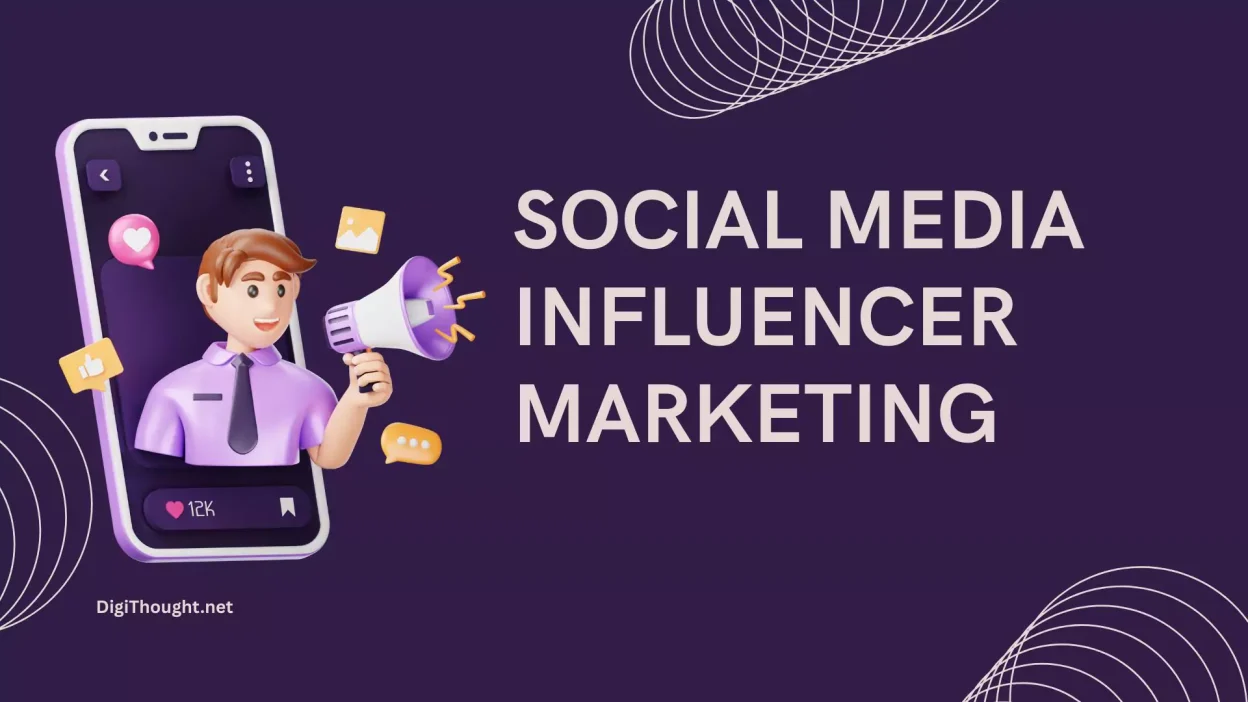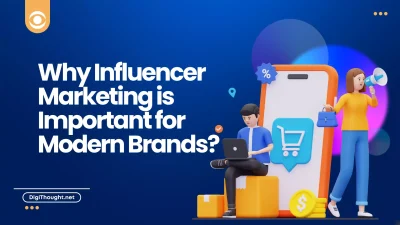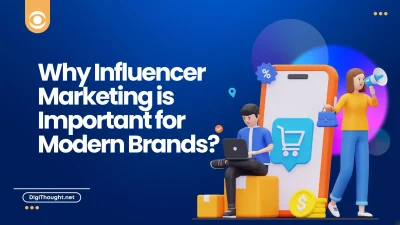One of the most effective and popular marketing strategies born of the digital revolution is Social Media Influencer Marketing.
Did you see your favorite Instagram designer praise a skincare brand, or the YouTuber repeatedly praise for rubbing a new gadget? Media influencer marketing was already at work here.
But what exactly is social media marketing with influencers? Why are so many brands prepared to invest in it, and how does it work?
This blog will give you a through understanding of influencer marketing principles, as well as explain how it can give new impetus to your brand.
The Basics of Social Media Influencer Marketing
What Is Social Media Influencer Marketing?
New phrase, significant objectives, YouTubers, the real rise of Social Media attention
Social media influencer marketing is essentially a type of partnership between a brand and an individual whose follower base extends to platforms like Instagram, TikTok, YouTube, Twitter (now X), or even LinkedIn.
These people, known as influencers, have strong niche positions and credibility with their specific audiences. This could be in fitness, food, fashion, or technology.
Brands will partner with influencers to either directly promote their products and services, or create content that integrates their brand message in a subtle and unofficial way.
For example, an influencer might document its personal use of a product, or produce more generic (‘branded’) content together with the brand in some very natural or very creative way.
This marketing strategy uses the credibility and audience loyalty of the influencer to reach people where other, more traditional forms of advertising fail.
How ‘Influencers’ Achieve Influence
Trust is at the heart of influencer marketing. Unlike faceless ads, influencers are people their followers know and trust.
Endorsements, reviews, and collaborations from an influencer resonate to those who watch as a genuine recommendation as opposed to paid advertising likenesses.
For example, consider this stat from a Nielsen study: 92% of consumers trust recommendations from individuals over brands.
It is this trust that makes influencer marketing so attractive.
The Advantages of Social Media Influencer Marketing
Targeted Reach
In almost every niche imaginable, influencers can be found.
This means that if you sell eco-friendly clothes, organic cookware, or gaming devices aimed at children, there is bound to be an influencer whose followers closely align with your targeted customer base.
So by aligning yourself with a fitness influencer whose audience is interested in health and wellness, you can make your targeting much more precise and effective than general ads.
Credibility and Trust
When an influencer vouches for a product, it is as good as a personal endorsement, only boosting the credibility of your brand.
This is especially important for small and emerging companies looking to establish themselves quickly in competitive markets.
Cost-Effective
While traditional forms of advertising like TV spots or billboards often require expensive budgets, influencer marketing can be pursued by brands of any size and budget.
Adding to the equation, they may partner with smaller micro-influencers for campaigns that deliver high ROI without breaking the bank.
Increasing Engagement
Influencer marketing benefits from having social media at its heart, which makes it an excellent method for generating conversations and improving metrics such as likes, comments, and shares.
Genuine partnerships frequently result in extensive, meaningful interactions between the audience and your brand.
Better Content
Teaming up with influencers is like closing ranks: you get someone who knows your core audience and can create relevant, high-quality content for you.
Many of these people are outstanding at producing content that feels native to the platform as well as meeting their audience’s expectations.
Drive Sales Conversations
The capacity to drive buying decisions is one of the main attractions of this approach for brands.
A majority of an influencer’s followers look to them for advice, so sales calls stemming from this source often feel completely organic rather than artificial.
Statistical evidence: According to CivicScience, 34% of the daily users in the U.S. of Instagram have bought a product because some influencer recommended it.
Kinds of Social Media Influencers
Influencers usually fall under two broad (subjective) categories:
their number of followers and the type of clout that they have.
Understanding these differences helps attract the right brand partners.
Mega-Influencers
-
Followers: 1 M+
-
Why Choose Them: With wide demographic coverage, mega-influencers — often celebrities — have massive reach. But advertising with mega-influencers is often very expensive.
Macro-Influencers
-
Followers: 100K–1M
-
Why Choose Them: These influencers bridge the gap between large audiences and involvement in a particular niche. They frequently specialize in an industry or lifestyle area.
Micro-Influencers
-
Followers: 10K–100K
-
Why Choose Them: Micro-influencers enjoy parallel engagement rates and under-the-radar connections with smaller but devoted fans. They are especially good at filling the role of modest-price authentic brand to get out into the market.
Nano-Influencers
-
Followers: 1K–10K
-
Why Choose Them: Though their reach is limited, nano-influencers maintain highly personal relationships with their followers. They are optimal for hyper-focused campaigns in a niche market.
Content Creators vs. Celebrities
It should be noted that there’s a fine line between celebrities and influencers.
While celebrities often become famous through traditional media (think: actors, athletes), influencers make their name in a field by creating their own content.
How to Assemble an Influencer Marketing Campaign
It’s not as simple as writing a check and handing it over to integrate influencer marketing into your strategy.
Here’s how to do it right.
Step 1. Define Your Marketing Goals
What do you hope to accomplish? Highest quality advertising? More traffic from search results alone?
Where your aims lie sets the stage for your campaign and helps determine its success.
Step 2. Find the Right Influencer
Not all influencers are created equal.
Look for influencers whose audience syncs with your target market.
Equip yourself with tools like Upfluence, AspireIQ to even manual analyses of social media account data to uncover potential partners around the country who will be good matches for you.
Step 3. Define the Collaboration
Do you want the influencer to post a review, product unboxing videos, or share a series of sponsored stories?
Clearly define the scope of work, so both parties know what they’re responsible for.
Step 4. Set Metrics for Success
How will you judge the success of the campaign?
Take a look at metrics like engagement rates, click-through rates, and sales conversion figures in order to analyze your own results as objectively as possible.
Step 5. Ensure Compliance
Brands must ensure that all posts are made with this guideline in mind.
This stipulates that it is obvious when something is sponsored content.
Choosing to use hashtags like #Ad, #Sponsored or #Partner can help keep your audience in the loop.
Challenges to Think About
No marketing strategy is free of challenges and influencer marketing is no exception.
In addition to riding on the growing trend toward this channel’s effectiveness, brands must bear these in mind to see substantial results.
-
Finding the Right Influencer: Partner with suppliers whose audience, values, and style align with those of your brand.
-
High Costs: Collaborating with mega-influencers is expensive, so it is important to carefully assess the potential ROI on these deals.
-
Maintaining Authenticity: A too-scripted or overly inorganic collaboration could turn off your audience, perhaps even harming your credibility in general.
-
Measuring ROI: It can sometimes be difficult to measure what you get back. To determine how effective your campaigns are, use tracking links, promo codes or other affiliate-type incentives.
Is Social Media Influencer Marketing Right for Your Brand?
With billions of daily active users across platforms such as Instagram and TikTok, influencer marketing is an indispensable tool that cannot be overlooked.
No other one so readily creates trust, ignites engagement and delivers a proven ROI if done well.
Hit up that microphone – if you want to reach out effectively and connect with local customers in real time, then influencer marketing may be exactly what your company needs.
You’d better start going after those relationships and see how far out of proportion your brand will grow in directions that weren’t planned!



